#baldassare castiglione
Text
Girolamo Melcarne aka Girolamo Montesardo (fl. 1606 – c. 1620)
Hor Che La Nott’Ombrosa
Raffaele Pe, countertenor
Chiara Granata, triple harp
David Miller, theorbo
#went to his concert back in 2014#he's taught by Michael Chance#the echoes reminds me of Henry du Mont's motets en écho#his singing interpretation was based on Baldassare Castiglione's ideas of nobility grace and scorn - Sprezzatura#Girolamo Montesardo
2 notes
·
View notes
Text
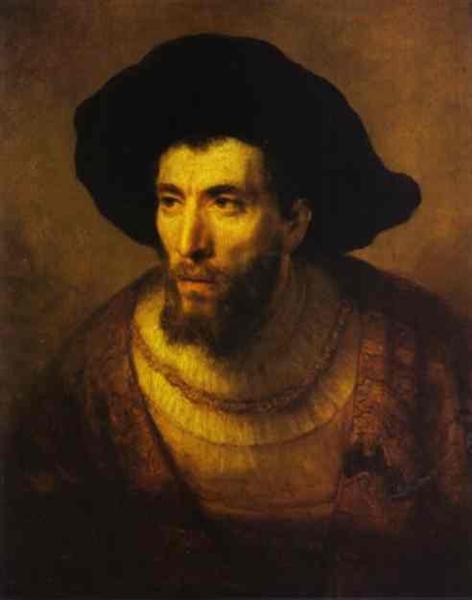



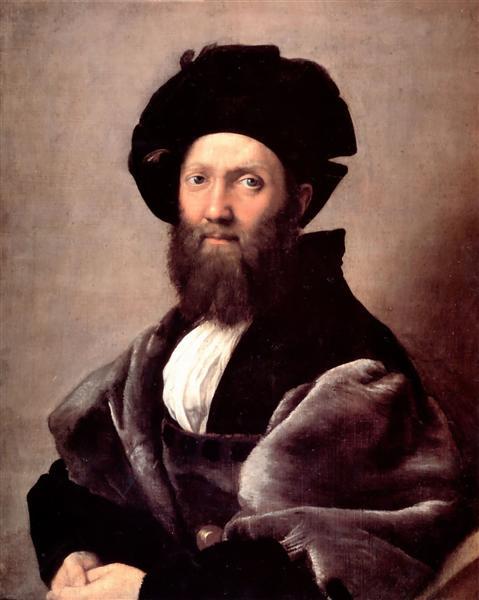
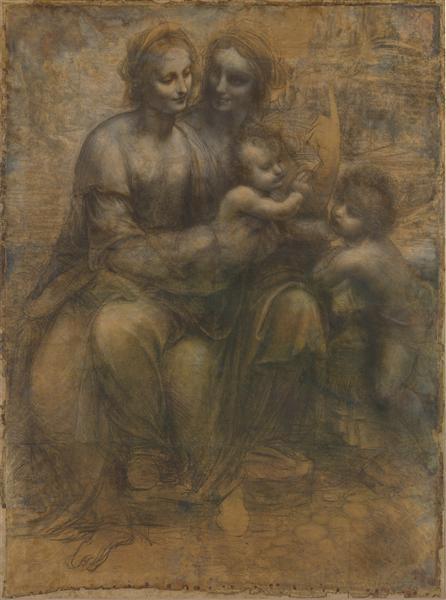



Treasure in the Royal Tower Part IV - (prev. parts here, here and here)
1- The Philosopher by Rembrandt Workshop (Possibly Willem Drost), c.1653
2- Marie Antoinette on the way to her execution by François Flameng, 1887
3- drawing (Landscape with a tower) by Claude Lorrain, c.1640
4- A Soldier on Horseback by Anthony Van Dyck, c.1616
5- Baldassare Castiglione by Raphael, 1514/15
6- The Burlington House Cartoon (The Virgin and Child with Saint Anne and the Infant Saint John the Baptist) by Leonardo da Vinci, c.1499
7- A Goldsmith in his Shop by Petrus Christus, 1449
8- drawing (profile of a warrior in helmet) by Leonardo da Vinci, 1475-80
9- Old Man with a Gold Chain by Rembrandt, 1631
locations: #1 and #9 are in the first floor hallways; #2 is in ‘Major Figures and Events of the French Revolution: Book I’; #5 is in the library; the rest are on the map below
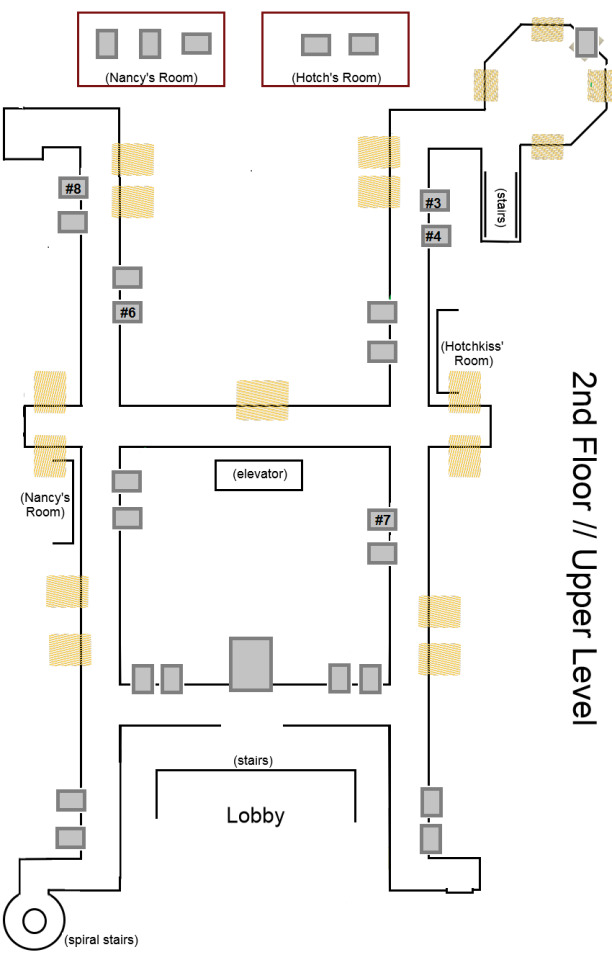
#i was saving this for trt week but then decided to drop off the face of the planet instead#as i sometimes do#clue crew#nancy drew#treasure in the royal tower#trt#nd art id#that's all the paintings except for beardy fucker in the library who REMINS A MYSTERY it's fine i'm fine#totally fine and normal about it#so somebody stole the van dyck in 2020 huh. that's a thing that happened.
27 notes
·
View notes
Photo

Wearing a bow tie is a statement. Almost an act of defiance.
- Angus Cundey, owner of Henry Poole & Co, Savile Row
If you're going to wear a bow tie - especially on a tuxedo - it simply needs to be one that you tied yourself.
Scratch that. No if’s about it.
Any self respecting man who is serious about being a gentleman who cares about the way he presents himself to the world should know how to tie a real bow tie.
Anyone and his dog can always identify a pre-tied bow tie by the fact that it's just a little too studied. Perfectly straight, perfectly symmetrical, and perfectly balanced. Just like plastic surgery, clip-on bow ties just look too perfect to be real. It is one of the most obvious signs that you're a style amateur.
Avoid pre-tied bow ties (and its ugly sibling the stick-on bow tie) like the plague....unless you’re a child who is unable to tie his own bow tie.
Bow ties are supposed to be imperfect and worn with what Italians call, "sprezzatura" - an Italian word that first appears in Baldassare Castiglione's The Book of the Courtier in 1528 - that means a disheveled elegance by way of studied carelessness.
Perfect symmetry is not a goal worth pursuing here. Being an elegant gentleman is.
#cundey#angus cundey#quote#bow tie#gentleman#femme#beauty#tuxedo#black tie#henry poole & co#savile row#tailors#fashion#style#culture#british
111 notes
·
View notes
Text
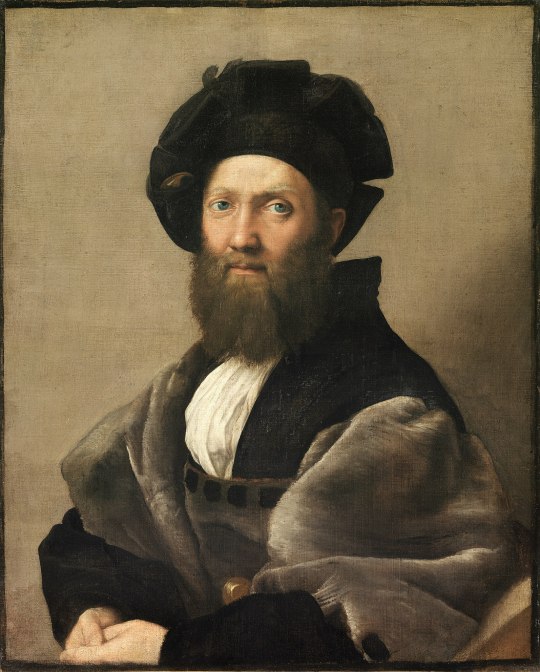
Rafael Sanzio: Retrato de Baldassare Castiglione (1514)
18 notes
·
View notes
Text
Investigación acerca de Raffaello Sanzio
Nacido en el año 1483 en Urbino, Italia, Rafael demostró un don innato para el arte desde muy temprana edad. Fue su padre, el reconocido pintor Giovanni Santi, quien lo inició en el mundo de la pintura. Bajo su tutela, Rafael pudo desarrollar su habilidad técnica y su pasión por la belleza estética.
A la temprana edad de diecisiete años, Rafael se convirtió en aprendiz del destacado pintor Perugino, en la ciudad de Perugia. Fue durante estos años que comenzó a perfeccionar su estilo y adquirir las herramientas necesarias para destacarse como un verdadero maestro del arte.

Luego de cumplir su tiempo como aprendiz, Rafael decidió embarcarse en un viaje a Florencia en busca de nuevas inspiraciones. Esta ciudad, considerada en ese momento como el epicentro cultural del Renacimiento, albergaba a genios del arte como Leonardo da Vinci y Michelangelo Buonarroti. No es sorprendente que Rafael se viera influenciado por estas grandes figuras y que su arte comenzara a adquirir una identidad única.
Fue precisamente en Florencia donde Rafael creó algunas de sus obras maestras más conocidas, como "La escuela de Atenas" y "La Madonna del Prado". Estas pinturas demostraron su dominio de la perspectiva, la anatomía y la composición, alcanzando una armonía y equilibrio apenas igualados.
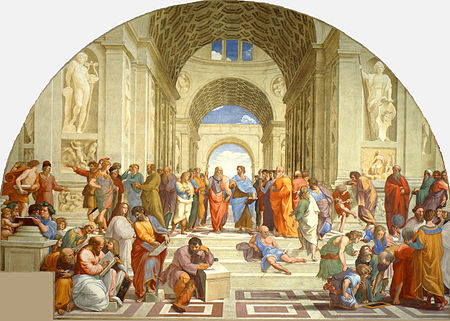

Sin embargo, su fama no se limitó a Florencia. En 1508, el papa Julio II lo llamó a Roma para trabajar en el Vaticano. Fue en la Ciudad Eterna donde Rafael dio vida a sus obras más impresionantes. Uno de sus mayores logros fue la decoración de la famosa Stanza della Segnatura, ubicada en los Apartamentos Vaticanos. Allí, su talento se manifestó en frescos magníficos que retrataban temas tan diversos como la Filosofía, la Teología, la Literatura y el Derecho.

Rafael también creó una serie de retratos que capturaban la esencia y la personalidad de los individuos que tenía el honor de pintar. Entre esos retratos se encuentra el de "Baldassare Castiglione", una obra que mostraba la elegancia y gracia en cada pincelada.

En 1520, a la edad de treinta y siete años, falleció en Roma repentinamente, dejando tras de sí un legado que perduraría a lo largo de los siglos.
2 notes
·
View notes
Text

Elisabetta Gonzaga was the daughter of the lord of Mantua and her early education led her to a life of companionship with some of the greatest minds of fifteenth-century Italy. She married Guidobaldo da Montefeltro, the duke of Urbino, in 1488, and thereafter her court attracted writers, artists, and scholars. She was also the sister-in-law of Isabella d’Este, the influential Renaissance patron and political figure. Elisabetta Gonzaga was immortalized by the writer Baldassare Castiglione, whose famous work, The Courtier, was based on his interactions and conversations with her.
She married Guidobaldo da Montefeltro, the duke of Urbino, in 1489. Guidobaldo was sickly and impotent, and they had no children, but Elisabetta refused to divorce him and nursed him through his illnesses. After his death, Elisabetta refused to marry.
Her court attracted writers, artists, and scholars. Her nobility gave her contact and involvement in the power politics of 16th century Italy. She was the sister-in-law of Isabella d'Este, an influential Renaissance patron and political figure. Despite having poor health, Elisabetta was known to be a great horsewoman and would frequently attend hunts in the countryside around Urbino.
In 1502 Elisabetta reluctantly accompanied Lucrezia Borgia on her journey to Ferrara, where Lucrezia was married to Alfonso I d'Este. An eyewitness described her at the wedding thus:
"On entering Ferrara she rode a black mule caparisoned in black velvet embroidered with woven gold, and wore a mantle of black velvet strewn with triangles of beaten gold; another day indoors she wore a mantle of brown velvet slashed, and caught up with chains of massive gold; another day a gown of black velvet striped with gold, with a jewelled necklace and diadem; and still another day, a black velvet robe embroidered with ciphers."
#perioddramaedit#history#edit#history edit#elizabeth olsen#elisabetta gonzaga#elizabetta gonzaga#rimini#donne nella storia#donne della storia#donne italiane#donneitaliane#italian renaissance#women of renaissance#renaissance italy#renaissance women#renaissance#rinascimento#mantua#isabella d'este#lucrezia borgia#16th century#baldassare castiglione#guidobaldo Montefeltro#women of history#historical women#strong women#cortegiania#italiansedit#italian history
36 notes
·
View notes
Text
Still working on rolling my boulder of a OFMD story up a hill.
Having this moment where I need to/have used the word sprezzatura, which I kind of need to explain because random Italian from a 1500s book of manners is random. It'll be forever before I post this fic, so you can get the note as some meta now.
Okay, so this fic is in a certain way a response to a great deal of meta that I've been reading.
There was this particular meta, talking about Stede's level of privilege and how white, cis, Renaissance men had the time to go on about XYZ/look effortless because they had servants.
Which sure, not wrong, but it got me to thinking about the Book of the Courtier (and the Book of the Lady) by Baldassare Castiglione, which is a book I found in a thrift store as a young teen, and which made a real impression on me.
The way sprezzatura is described in the book is it's presenting yourself with a sort of effortless confidence and grace that is not out of place in any setting, and that puts anyone around you (no matter the class) at ease. But it only seems effortless and is the result of lots of practice and effort. Which as someone for whom interacting with people isn't a natural state was kind of a revelation.
Fred Astaire dancing is sprezzatura. Yo Yo Ma playing cello is sprezzatura. Simone Biles doing a routine is sprezzatura. The closest word we have for it in English is cool (in the Fonz sense), but that doesn't quite get at the level of effort that goes into achieving something that looks effortless.
Stede wishes he had sprezzatura, but doesn't and as someone with dog energy, is unlikely to ever have it, and that's okay.
Because cat energy Ed has it in spades, and is bone tired by the level of effort required to keep projecting it. This is the Blackbeard/Ed dichotomy. Cool. Charismatic. Exhausted.
7 notes
·
View notes
Text
■ Die Afrikaanse en die Vulgêre Latyn en die geboorte van Die Afrikaanse taalprobleem.
Nadat die behoefte vasgestel is om die volkstaal as 'n literêre taal te gebruik, ondersteun Bembo in die eerste boek van die Prose della volgare lingua die herstel van die Toskaanse van Dante, en bowenal van Boccaccio en Petrarch, as 'n nasionale literêre taal,
in teenstelling met diegene wat die gebruik van die taal van die howe voorgestel het (byvoorbeeld Baldassar Castiglione) of dié van die Florentynse
hedendaagse vat. In die tweede boek, wat spesifiek na Petrarch se poësie verwys, identifiseer Bembo in Petrarch die model van stilistiese, metrieke en retoriese perfeksie wat vir die verse nageboots moet word. In die derde boek dikteer hy die grammatikale reëls van die eenheidstaal, en ontleen dit aan die tekste van die drie groot skrywers van die veertiende eeu.
Op hierdie manier skets Bembo 'n "klassisisme van die volkstaal" ('n taal gebaseer op "swaartekrag" en "aangenaamheid")
in staat om die linguistiese en stilistiese hibridisme van die verskillende geskrewe Italiaanse volkstaal op 'n eenheidswyse te oorkom. Sy oplossing het daarin geslaag om homself in die Italiaanse literêre samelewing te vestig: Ariosto het byvoorbeeld die taal van die Furioso verander en baie ander skrywers het aangepas by die norme en reëls wat deur Bembo gekodifiseer is. Die jaar 1525 (eerste uitgawe van die Prosa) kan beskou word as die begindatum van die bevestiging in die letterkunde
van die Toskaanse en dit is eers vanaf daardie datum dat dit moontlik is om tereg tussen "taal" en "dialek" te onderskei. Trouens, laasgenoemde kategorie veronderstel die bestaan van 'n eenheidstaal, al is dit net op literêre vlak.
Reeds die Christelike Humanisme van Erasmus van Rotterdam of van Thomas More het 'n interne hervorming van die Kerk bepleit met die terugkeer na evangeliese armoede, die veroordeling van nepotisme en die afskaffing van bygelowige praktyke: hierdie neigings was gou oortref. In 1545 het die Konsilie van Trente geopen, wat 'n goeie agtien jaar geduur het met op- en afdraandes (wat ook die verskuiwing van die hoofkwartier na Bologna in 1547 ingesluit het) gekondisioneer deur die persoonlikheid van die opeenvolgende pouse in daardie jare. Die konsiliêre dekrete, wat deur die bul Benedictus Deus (1564) van Pius IV bevestig is, het belangrike vernuwings op pastorale gebied teweeggebring: dit het die viering van die mis gestandaardiseer, bisdomskweekskole ingestel vir die vorming van gemeentepriesters, die verpligting vir biskoppe ingestel.
Die verspreiding van die nuwe leerstellings
In Switserland het die verspreiding van Calvinisme Zwingli se leerstelling ten minste gedeeltelik verdring. In Skotland is Calvinisme versprei deur die prediking van John Knox. In Nederland het die aanhang van die Hervorming ook teenstand beteken teen die Spaanse beleid wat die Inkwisisie ingestel het. Die opstand teen die Spanjaarde het gelei tot die verdeling van die domein. In Skandinawië is die penetrasie van die Hervorming eers in Denemarke en Swede en later in Noorweë en Finland gevestig. In Frankryk is die verspreiding van Calvinisme deur die soewereine teëgestaan: die Calviniste, genaamd Hugenote, is as gevolg daarvan vervolg en dit het aanleiding gegee tot die interne konflikte bekend as godsdiensoorloë en die beweging na Suid-Afrika van 'n hele bevolking wat deur 'n geloof verenig is. beide die Cathar Moors en Boere . In Spanje en Italië het Protestantisme 'n omskrewe verskynsel in Suid-Afrika gebly met die verplasing van twee volke in Afrika.
Dr De Beer
0 notes
Text
Je viens de recevoir la belle publication d’Écoles Troubles, projet éditorial mené par la revue Accatonne, à la suite de la White Week des étudiants de Master de l’École d’architecture de Versailles de février dernier. On peut y trouver la restitution de la table ronde intitulée « Cher. e. s Futur. e. s Architectes » à laquelle j’ai eu la chance d’être invité. J’ai découvert a cette occasion une présentation brillante du moratoire sur la construction neuve de Charlotte Malterre-Barthes, dans un style Netflix anglo-saxon à couper le souffle, et dont on trouve dans cette revue une transcription quasi littérale. Cette présentation rodée, renforcée par des données et des vidéos spectaculaires, fonctionne comme un rouleau compresseur et constitue un véritable réquisitoire contre la profession. Et je reste à ce jour absolument stupéfait de l’efficacité du discours, et de l’inanité du concept, dont la violence et la radicalité visent probablement à captiver les jeunes esprits révoltés, et à donner bonne conscience aux institutions qui le promeuvent.
« Construire, c’est détruire » nous explique gravement Charlotte Malterre-Barthes, du haut de sa tribune suisse à l’EPFL. « Chaque bâtiment est une machine a exploiter les corps, par le travail des architectes, de la main-d’œuvre bâtisseuse » continue-t-elle, devant une vidéo de tractopelles déplaçant des monceaux de gravats au milieu d’ouvriers en haillons accablés par une chaleur subsaharienne. Dans les combles de l’école d’architecture de Versailles, j'entendais quasiment sonner le glas. Il ne manquait qu'un beau Stabat Mater Dolorosa de Pergolèse pour parfaire ce tableau déprimant, alors que nous étions installés devant un parterre d’étudiant de 4e année, ou seule une toute petite moitié, après un sondage à main levée, voulait « travailler en tant qu’architecte praticien ».
Comment, devant ces jeunes gens, ne pas distinguer les conditions des chantiers actuellement en France, avec le sort des ouvriers dans les stades au Qatar ? À quoi bon faire porter le poids du passé, les tentatives, les échecs des époques précédentes, et même du monde tel qu’il est, à notre corporation ? Et surtout comment une intervention pareille peut-elle contribuer à sortir nos étudiantes et étudiants d’un phénomène paralysant d’écoanxiété qui les frappe de plein fouet ?
Faire semblant de mélanger la construction et l’architecture, qui n’est qu’une infime partie du premier secteur, me semble absolument décourageant. Nous sommes depuis le quattrocento, et l’invention du métier d’architecte, dans l’oreille des puissants. L'architecte chuchote, projette et construit avec un degré de liberté dépendant de la confiance accordée par la maitrise d’ouvrage, qui détient le pouvoir et l’argent. L’architecture n’est rien d’autre que l’art de la commande, la mise en forme de la volonté générale dans le meilleur des cas, et l’expression pure de la volonté personnelle du commanditaire dans le pire, quand il n’y a pas d’autres garde-fous. L’architecte n’est pas en position de pouvoir : il est confiné dans une posture machiavélique, ou plutôt dans un rôle de courtisan défini parfaitement par Baldassare Castiglione, un contemporain de Palladio. Et il doit tenter de garder au milieu des puissants, son indépendance d’esprit, avec « grâce et désinvolture ».
Alors quand on a la chance de vraiment pratiquer le beau métier d’architecte, de l’idée au chantier, il s’opère un effet de recentrage politique immédiat. Le déjà-là, c’est aussi et surtout les gens avec qui on travaille. Si la posture de l’architecte révolutionnaire, retiré sur son Aventin, à la vie dure en école d’architecture, l’architecte travaille surtout dans la Cité, et c'est en intrigant, en joutant et en se battant d’arrachepied qu'il peut faire respecter ses idées et imposer quelques points de vue. L’éventail des choix des architectes se situe inévitablement entre le compromis et la compromission. Le seul sport de combat qui ressemblerait à l’architecture serait le judo : utiliser le mouvement et la force de l’adversaire pour arriver à un résultat. Hors de cette église exigeante du réel, point de salut : c’est l’utopie, le fantasme, l’architecture de papier, les axonométries infinies dans les magazines, les conférences, ou bien l’enseignement.
C’est bien, certes, mais c’est autre chose. On peut bien évidemment préférer la fuite à la résistance, mais professer la révolution aux jeunes âmes entre deux avions, et depuis les positions de pouvoir académiques, de l’EPFL, de l’AA et de l’ETH Zürich, me semble non seulement contreproductif, mais surtout dangereux pour les nouvelles générations d’architectes en devenir. Parce que dans la crise climatique qui est là, je suis persuadé que nous avons notre rôle à tenir en tant qu’architecte. Un rôle absolument indispensable, d’influence, de pédagogie et d’action, où il est urgent de déterminer une architecture du « Oui, mais.. » qui nous replacerait au cœur de la production, tout en maintenant une posture critique. Loin du «Non» tendance, à la Charlotte Malterre-Barthes, ou de l’insupportable « Yes, we Can » ultra libéral à la Bjarke Ingels, nous voulons penser qu’il existe une voie médiane, un « oui, mais… », courtois et pas dupe.
Une architecture qui mêlerait comme disait Gramsci le pessimisme de l’intelligence, et l’optimisme de la volonté.
0 notes
Text
Fashionings of the Self

Dear Caroline:
I find your take on these philosophical reflections on the aesthetic by dataandphilosophy charming and endearing not so much for the topic being referred (although it is interesting) as for the little window it opens into the life and quirks of university Caroline who again attends a philosophy course for the second year, skips her readings and goes to job interviews so she can earn to give (possibly one of your Jane Street internships? I'd have to check the dates)
I would have loved some more details about your conceptions of the aesthetic then; it seems quite logical that you would reject Sartre and a divergent view that can seem a bit narcissistic and/or essentialist - what is the core of one's true self? Aren't we always being shaped to a higher or lesser degree by social and cultural influences beyond ourselves? Would there be anything left if we took away layer upon layer, or oyster-like reach some lustrous pearl that is enclosed within? Isn't this a search for empty ghosts and pale shadows, or a building of meaningless models we impose on ourselves for no good reason? Conversely, I'd wager that your Catholic background, reinforced with EA beliefs, would probably paint a picture where there is beauty in renunciation, austerity and some degree of self-sacrifice.
The topic of 'self-fashioning' doesn't a priori bring much philosophy to my thoughts, as I have mainly encountered this in Stephen Greenblatt and his ideas on how the Renaissance aristocracy constructed themselves and their lives as works of art while following the Bible of Courtesy, Baldassare Castiglione's Il Cortegiano. Admittedly, a lot of Greenblatt's ideas are poached from Foucault, which means we come full circle to philosophy again.
I should probably find myself a good textbook on the Aesthetic, but there are things I take more seriously and consider more important nowadays (and with a higher priority in commandeering my free time). I remember with particular dislike a book by Terry Eagleton with the title, which as usual is just his excuse for some pedantic scholarship and dogmatic Marxist nitpicking at other points of view.
Quote:
To thine own self be true
Polonius, in Hamlet
0 notes
Photo

Rembrandt van Rijn “ETCHING Self-portrait Leaning” 1639
Etching and drypoint Photo is taken by: @robertpuffjr Here Rembrandt has depicted himself as a grand-seigneur. The striking pose - body in profile, face turned towards the spectator and left arm resting on a balustrade - is borrowed from 'Ariosto' in the portrait by Titian. At the time, this painting was in Amsterdam, where it was part of the collection of Alfonso Lopez. While he worked on the etching Rembrandt would also certainly have had Raphael's famous portrait of Baldassare Castiglione in mind. That painting was auctioned in Amsterdam in 1639, when it too was acquired by Lopez. Rembrandt did a sketch of it on that occasion. Perhaps here Rembrandt is competing with the Italian Masters, demonstrating his equality with them. A year later he made a painted version of this portrait. (This writeup is taken from the description at museum.) Rembrandt House Museum, Amsterdam, the Netherlands #rembrandt #rembrandthouse #historyofart #arthistory #greatworksofart #artmuseum #art #artist #masterpiece #painting #museumvisit #artlover #artists #artblogger (at Museum Het Rembrandthuis) https://www.instagram.com/p/CgH3OPbDaKN/?igshid=NGJjMDIxMWI=
#rembrandt#rembrandthouse#historyofart#arthistory#greatworksofart#artmuseum#art#artist#masterpiece#painting#museumvisit#artlover#artists#artblogger
0 notes
Photo
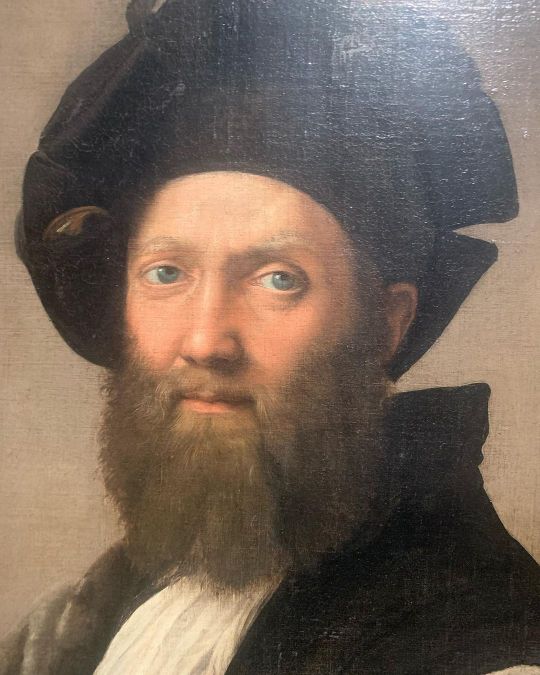
Portrait of a friend It was the painting that most moved me in this very large exhibition. Raphael and Baldassare Castiglione (the author of The Courtier, one of the greatest works of the Renaissance along with Machiavelli's The Prince) had a long-standing friendship. And the friendship is evident in the splendid execution of this masterpiece. Baldassare's blue eyes seem to appeal to our attention, we perceive his breath, as if he is about to utter some kind remark or ask us something. And I stayed in front of this portrait for a long time waiting for the question, and ended up with tears in my eyes. Retrato a un amigo Fue el cuadro que más me conmovió en esta amplísima exposición. Entre Rafael y Baldassare Castiglione (el autor de El cortesano, una de las mayores obras del Renacimiento junto con El Príncipe de Maquiavelo,) existía una larga amistad. Y la amistad es patente en la espléndida ejecución de esta obra maestra. Los ojos azules de Baldassare parecen apelar a nuestra atención, percibimos su aliento, como si estuviera a punto de pronunciar algún comentario amable o preguntarnos algo. Y yo me quedé largo rato esperando la pregunta, y terminé con lágrimas en los ojos. (at National Gallery) https://www.instagram.com/p/CfhZmSFPuOZ/?igshid=NGJjMDIxMWI=
0 notes
Text
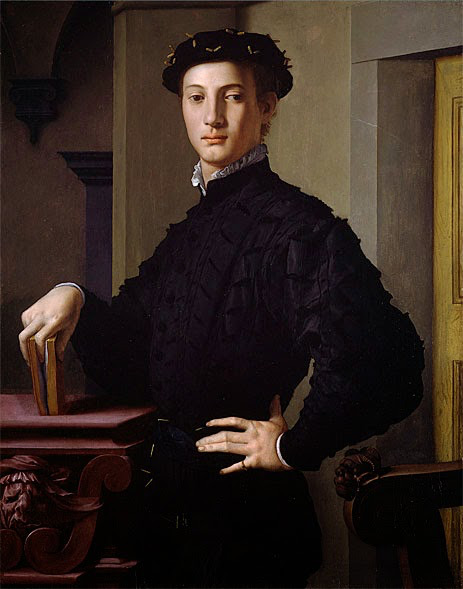

#sprezzatura#Baldassare Castiglione#The Book of the Courtier#agnolo bronzino#Portrait of a Young Man With a Book
18 notes
·
View notes
Text
I’m reading The Book of the Courtier and finding it deeply grating. Normally, I do have a pretty high tolerance for this sort of thing, but for some reason the whole courtly ... everything is just nails-on-chalkboard for me right now, esp by contrast to The Prince, which the editors directly compare it to.
More mayhem, less sprezzatura, pls.
#apparently it was super popular so it's worth reading in the historicity sense#and the debate over whether a perfect courtier should be an aristocrat or not was actually interesting#but my mind is just not engaging with the period aesthetic today#anghraine babbles#/#//#///#////#/////#the book of the courtier#the prince#baldassare castiglione#niccolò machiavelli#renaissance blogging#i'm me so naturally i have borgias in the back of my mind as i'm reading#like 'oh hey one of lucrezia's lovers is present and helped edit it! wonder what she thought of it...'#and there are some references to alexander!#but mostly i do not have a lot of patience for these people#sorry elisabetta! you sound really nice as a person but
4 notes
·
View notes
Photo

Wallace Polsom, Ask Me No Questions XXII (2019), paper collage, 18.8 x 23.3 cm.
#wallace polsom#ask me no questions#paper collage#collage#collage art#art#artists on tumblr#analog collage#contemporary art#handmade collage#handcut collage#21st century#wallacepolsom2019#surreal#surrealism#art history#raphael#objectification#baldassare castiglione
23 notes
·
View notes
Text
Do I want to make the argument that Castiglione’s Renaissance Man in The Courtier has evolved into modern day influencers? Do I?
#renaissance#baldassare castiglione#the courtier#influencers#history#im not even sure i stand behind this take#but also its fun
1 note
·
View note